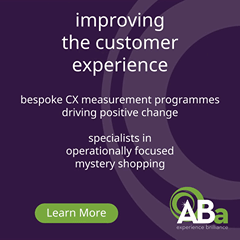Event review: Omnichannel Retail 2022
Customers are now demanding seamless experiences across channels, enhanced by rich data insights that personalises the interactions, which is fuelling the need for retailers to set up robust infrastructures that can deliver on these requirements.
Speaking at The Retail Bulletin Omnichannel Retail 2022 webinar Katherine Biggs, head of global strategy communications at ParcelLab, suggested: “What’s important today is end-to-end customer experiences as people are careful and taking longer over their purchases. What is the experience from the moment they hit the website to potentially returning the item?”
Building solid foundations
What helps retailers to deliver on this, according to Callum Campbell, CEO of Linnworks, is the right “operational backbone that connects everything”. He adds: “By doing everything centrally enables investments to be committed to the business. We work with businesses with fantastic people and growth in all the channels but they can’t scale it anymore. If retailers don’t have the operational infrastructure then they can’t go very far.”
He suggests the driving force behind the adoption of this approach, that connects all the channels, is the desire for convenience by shoppers. “They require everything on their terms and this needs a multi-channel strategy that involves brands and retailers working out what’s convenient for customers across the channels on all touchpoints. The future winners will be those who organise around convenience and with an operational infrastructure in place that enables their businesses to grow fast,” says Campbell.
Determining relevant channels
Integral to this approach is working out what channels are right for the brand. Dhi Matiole Nunes, co-founder of The Latest, says for instance that he does not have an app for his business because it is not the experience he is after for his customers. “For us, it’s about the store, the webshop and social media. We don’t have kiosks in-store because we don’t want screens. It’s all about bringing people and products together through personal contact. The store is a point-of-experience and not a point-of-sale,” he says.
Understanding the roles of the channels has also been important for Carolina Agudo Lazareno, customer champion for Europe at Sigma, especially as she has moved from the fashion sector to food: “Online sales are a small percentage at the moment for food but this DTC (Direct to Consumer) channel is different for food because it’s not about sales but is about getting to know the customers and sharing content. We look to get consumer feedback and leverage it across all the channels to drive traffic to the supermarkets.”
She adds that being a multichannel business in fashion is very different to a food brand: “We base everything on the data and from this you can work out where the customer wants you to be and you can then choose the right channels. We use data to speak with consumers and to understand what they need.”
Communication is key
Speaking with customers has certainly risen up the agenda for Alberto Billato, digital e-commerce director at Videndum, who says the company has made the significant move from selling its product to businesses to instead focusing on retailing to consumers. “We’re now communicating direct with consumers, which has realty opened up our eyes. We now talk about customer service scores and the customer lifecycle is now much longer.”
These conversations with the customers has led Videndum to talk in terms of a community and have a desire to be a trusted party: “We don’t just want to be another retailer, we want to be a community. This is the challenge behind our transformation. Trust is a matter of engagement and we’re plugging in a CRM system so we can connect social metrics with business metrics. We’re starting to connect the dots.”
At the heart of CRM systems of any description is data and it is this that determines whether a business delivers a seamless journey or not across the various channels. Titus Trossel, corporate development manager at Currys, says: “I’m a customer of many retailers and I’m still surprised how many experiences are not seamless. The main problem is the information retailers have on in-store customers. With pure-plays there is significantly more information. Getting more data on in-store customers is very important in order to have an integrated customer journey.” He suggests ways to capture this data is through cameras and loyalty programmes.
Understanding customer behaviours
Harpreet Cheema, head of workplace services at Sodexo, agrees that a frictionless customer journey requires good data and insights. “Retailers need to look at the journey – from the point of when the customers wake up to what’s leading them to make a purchase. Consider how to help customers along the pain points and then create a frictionless experience by understanding what the current behaviour looks like and benchmarking it. We look at other operators and try to bring nuggets into our business.”
Biggs recommends retailers take a lead from Gen Z’s because they are digital natives and are driving change in the retail sector. “We’re influenced by them and understanding them helps with the rest of your audience. This will help retailers create a multi-channel business and also have sustainability values,” she says.
Words by Glynn Davis
The event is available to view now.
Click here to view session one
Click here to view session two














